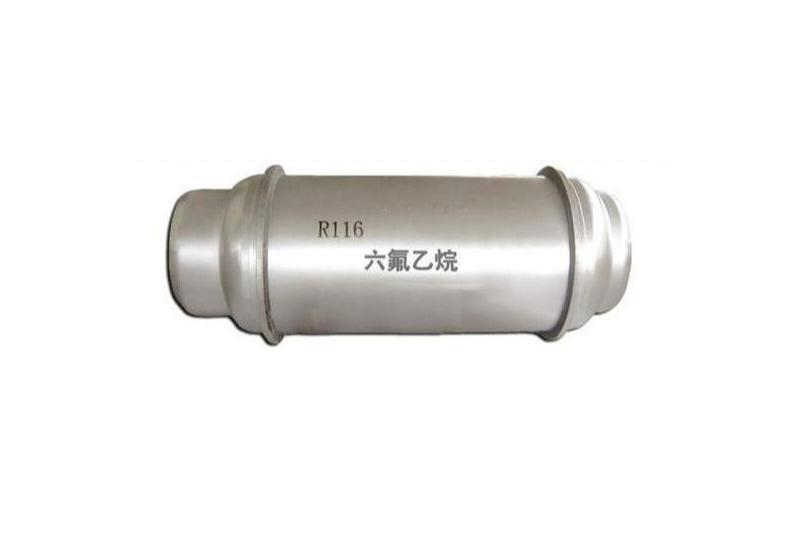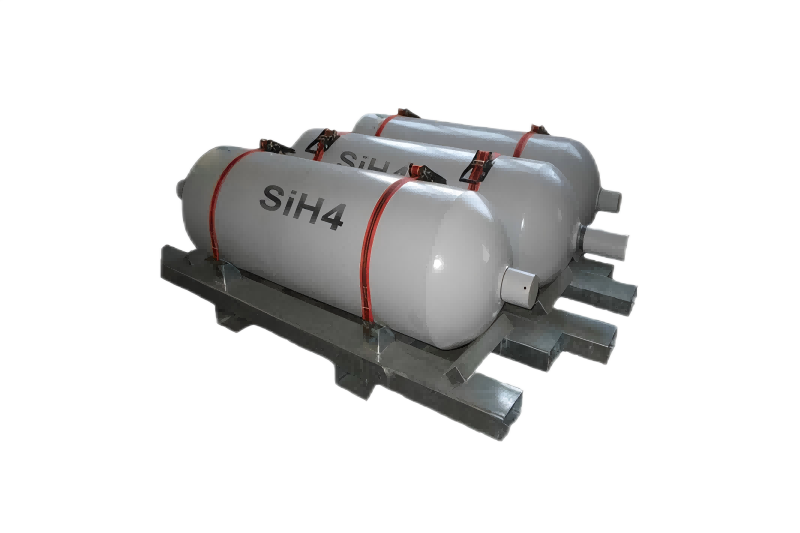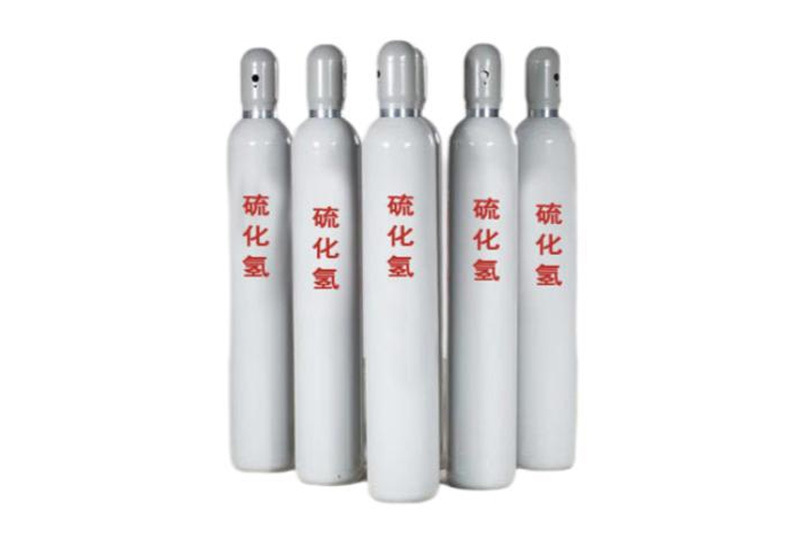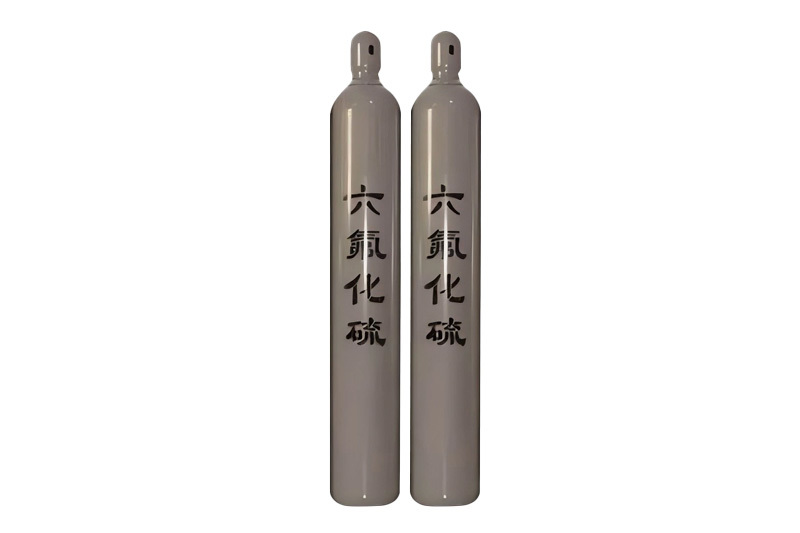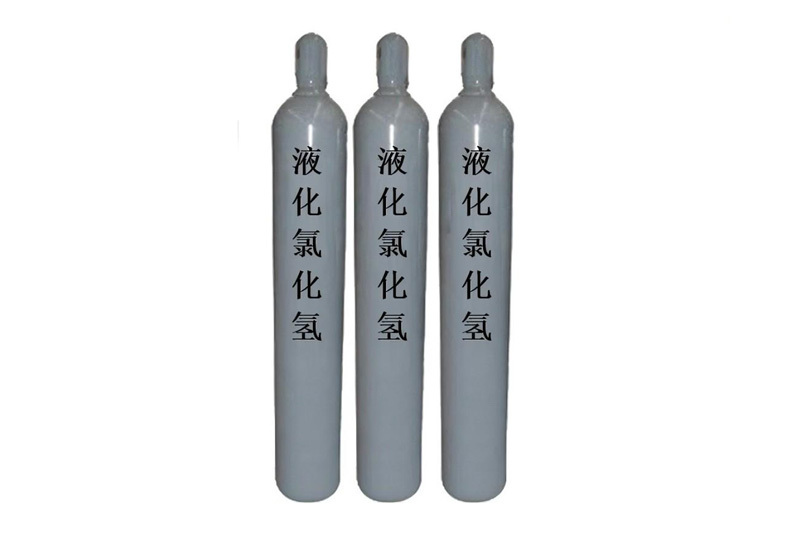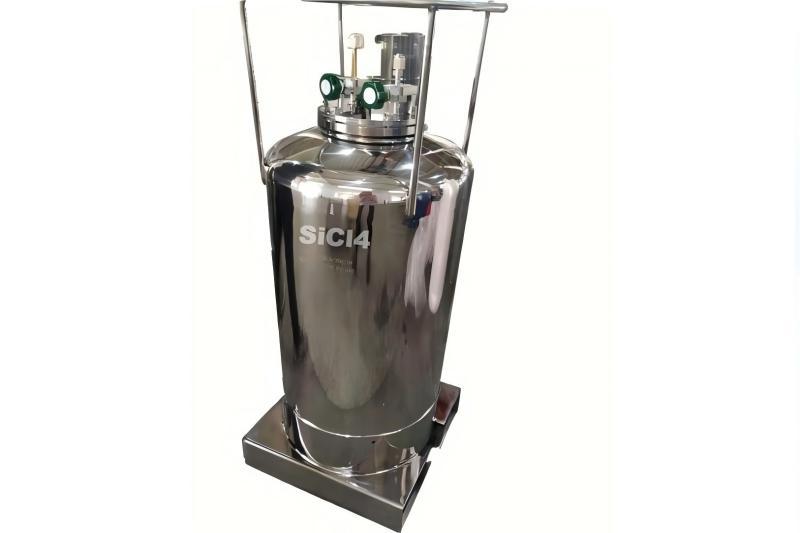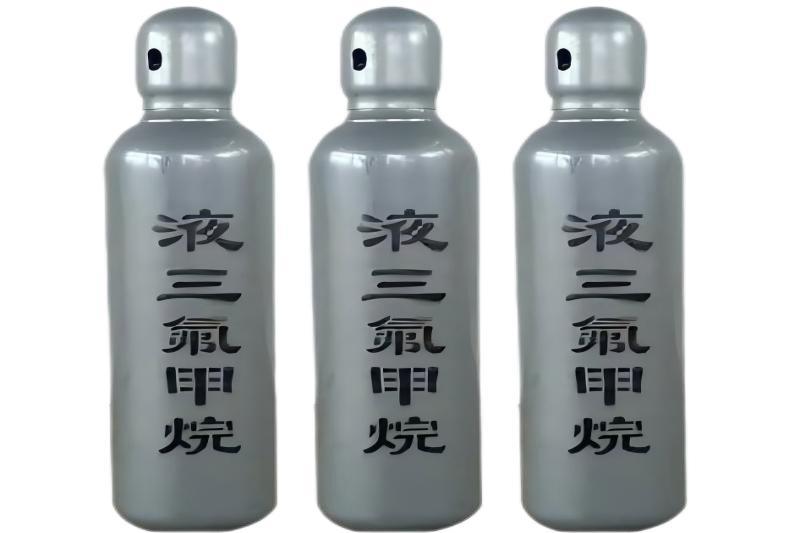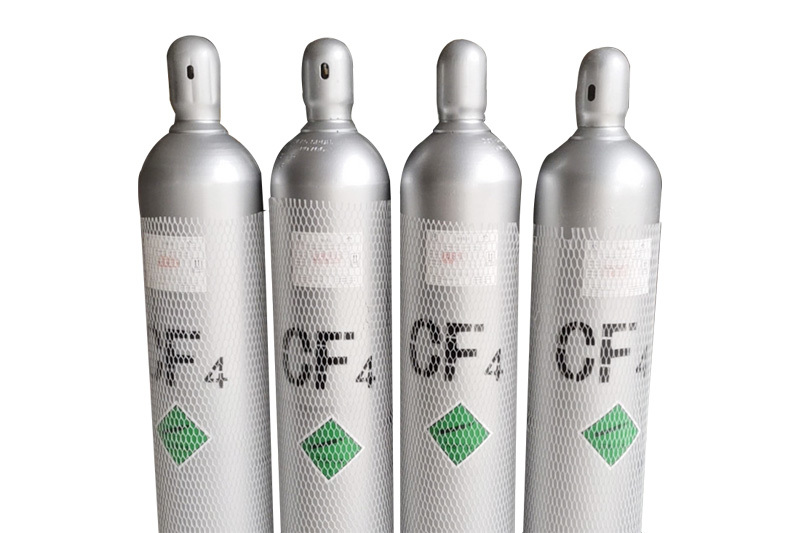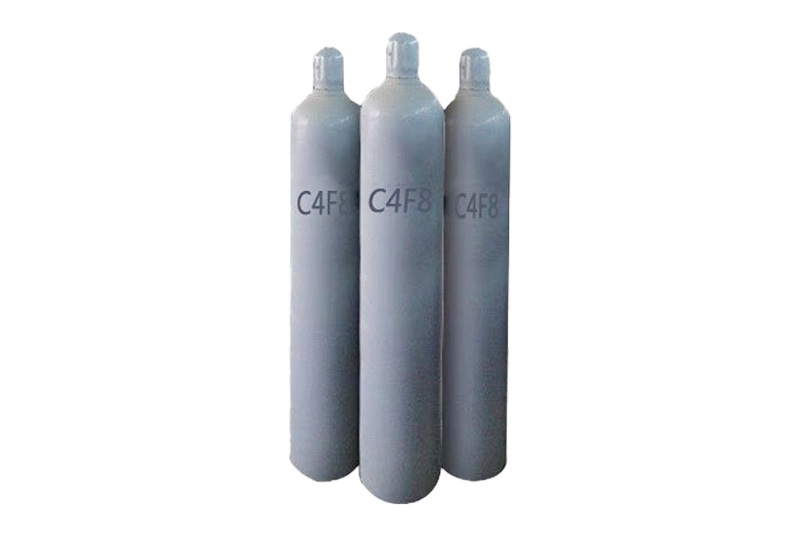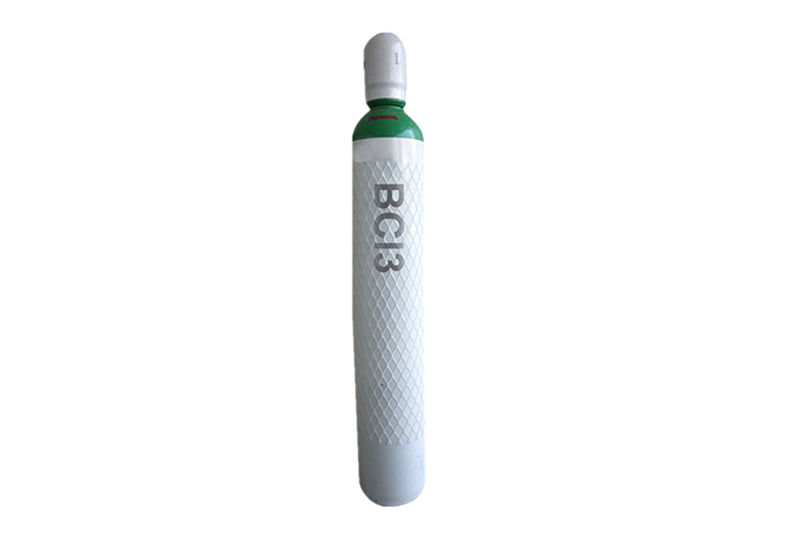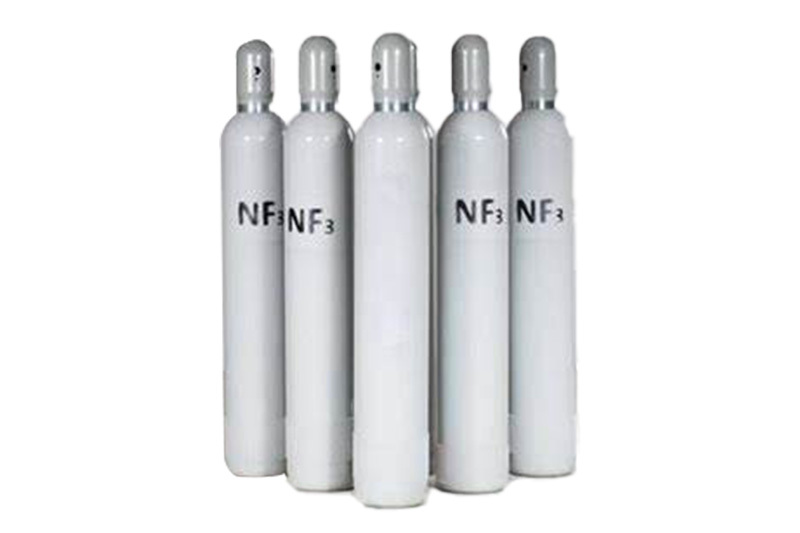Hexafluoroethane (C₂F₆), also known as perfluoroethane, is a colorless and odorless gas. It is widely used in the electronics industry and refrigeration applications. In microelectronics manufacturing, it serves as a critical gas for plasma etching, meeting the high-precision requirements of ultra-large-scale integrated circuit (ULSI) production. Additionally, hexafluoroethane is employed as an eco-friendly refrigerant due to its low toxicity, non-flammability, and atmospheric stability, making it ideal for applications requiring precise temperature control. These diverse applications highlight hexafluoroethane’s unique chemical properties and broad industrial value, cementing its role as an indispensable material in modern technology and manufacturing
Silane (SiH₄), also known as silicon hydride. It is a colorless, flammable and toxic gas with a strong garlic odor. It is easily ignited in air, extremely sensitive to oxygen and air, and may even undergo explosive reactions with oxygen at temperatures of -180 ℃. Silane is widely used in various industries such as electronics, energy, glass, and high-tech, mainly as a key material for the production of liquid crystal TFTs, solar cells, semiconductors, and more. Due to its spontaneous combustion and toxicity, silane needs to be handled and stored with special care to avoid fire, explosion, and health hazards.
Hydrogen sulfide (H₂S) is a colorless and highly toxic acidic gas, belonging to inorganic compounds. It has no obvious odor at high concentrations, strong rotten egg odor at low concentrations, and sulfur odor at extremely low concentrations. It is a byproduct of many industrial processes, such as natural gas extraction, petroleum refining, wastewater treatment, and paper industry. It is also produced in nature through the decomposition of organic matter and the metabolic activities of certain microorganisms. Hydrogen sulfide has a slightly higher density than air and can accumulate in low-lying areas, forming potential hazardous zones. At low concentrations, it is toxic to the human body, and inhaling high concentrations of hydrogen sulfide can quickly be fatal. It inhibits cellular oxidative phosphorylation, hinders cellular respiration, and leads to cell death. Hydrogen sulfide is irritating to the eyes, respiratory system, and nervous system, and exposure to low concentrations may cause eye irritation, headache, cough, and difficulty breathing.
Sulfur hexafluoride (SF₆) is an inorganic compound that is a colorless, odorless, non-toxic, and non flammable stable gas at room temperature and pressure. It has a molecular weight of 146.055 and a density of 6.0886kg/m3 at 20 ℃ and 0.1 MPa, which is about 5 times the density of air. The molecular structure of sulfur hexafluoride is octahedral, with a small bonding distance and high bonding energy, making it highly stable. At temperatures not exceeding 180 ℃, its compatibility with electrical structural materials is similar to that of nitrogen gas.
Hydrogen chloride (HCl), with a molecular weight of 36.461, is a colorless, irritating, corrosive, and suffocating gas that strongly emits smoke in humid air. A hydrogen chloride molecule is composed of one chlorine atom and one hydrogen atom. Hydrogen chloride is easily soluble in water and alcohol, as well as in ether. Its aqueous solution is called hydrochloric acid, also known as hydrochloric acid. Under standard conditions (0 ° C, 101.325 kPa), one volume of water can dissolve approximately 500 volumes of hydrogen chloride.
Silicon tetrachloride (SiCl₄) is an inorganic compound belonging to halides and silicides. It is a colorless and transparent liquid with a suffocating odor. It undergoes severe hydrolysis when exposed to water, producing silicic acid and hydrogen chloride, while releasing a large amount of heat. Smoke in the air, strongly hydrolyze when in contact with water, producing silicic acid and hydrochloric acid. Silicon tetrachloride is mainly used to produce pure silicon, high-purity silicon dioxide, gas-phase white carbon black, organic silicon compounds, optical fiber preforms, smoke suppressants, as well as dopants, catalysts, and solvents.
Trifluoromethane (CHF₃), also known as fluoromethane, is a colorless, almost odorless gas with a molecular weight of 70.014. Its melting point and boiling point under standard conditions are -160 ° C and -84 ° C, respectively. In addition, trifluoromethane is a strong greenhouse gas with a high greenhouse effect potential and significant impact on the atmosphere.
Carbon tetrafluoride (CF₄), also known as tetrafluoromethane or perfluoromethane, is a compound that is a colorless gas at room temperature and pressure. It can be regarded as both a halogenated hydrocarbon (organic compound) and an inorganic compound. Carbon tetrafluoride has the characteristics of good chemical stability, good oxygen solubility, non flammability, and non corrosiveness. It is soluble in chloroform and benzene, but insoluble in water. It is mainly used in plasma etching processes for various integrated circuits, and is also used as a laser gas, low-temperature refrigerant, solvent, lubricant, insulation material, and coolant for infrared detection tubes.
Octafluorocyclobutane (C₄F₈) is an organic compound commonly used in food and media gases in daily life. Under normal conditions, octafluorocyclobutane does not react with other substances, but when the temperature reaches 600 ℃, it decomposes into carbon and tetrafluoride, as well as some toxic compounds. Moreover, while it raises the temperature, the metal can also catalyze the decomposition of octafluorocyclobutane, so it is still necessary to be very careful when using it.
Boron trichloride (BCl₃) is an inorganic compound mainly used as an organic reaction catalyst, such as esterification, alkylation, polymerization, isomerization, sulfonation, nitration, etc. It can also be used as an antioxidant in magnesium casting and alloys, and as a main raw material for the preparation of boron halides, elemental boron, boranes, sodium borohydride, etc. It is also used in the electronics industry, etc.
Nitrogen trifluoride (NF₃) is an inorganic compound that is a colorless gas at room temperature and pressure, and has strong irritants. It is mainly used in plasma etching processes in semiconductor manufacturing, and also serves as a high-energy fuel and oxidant. Nitrogen trifluoride is toxic and reacts with water vapor in the atmosphere to produce nitric acid and hydrofluoric acid, causing environmental pollution.


